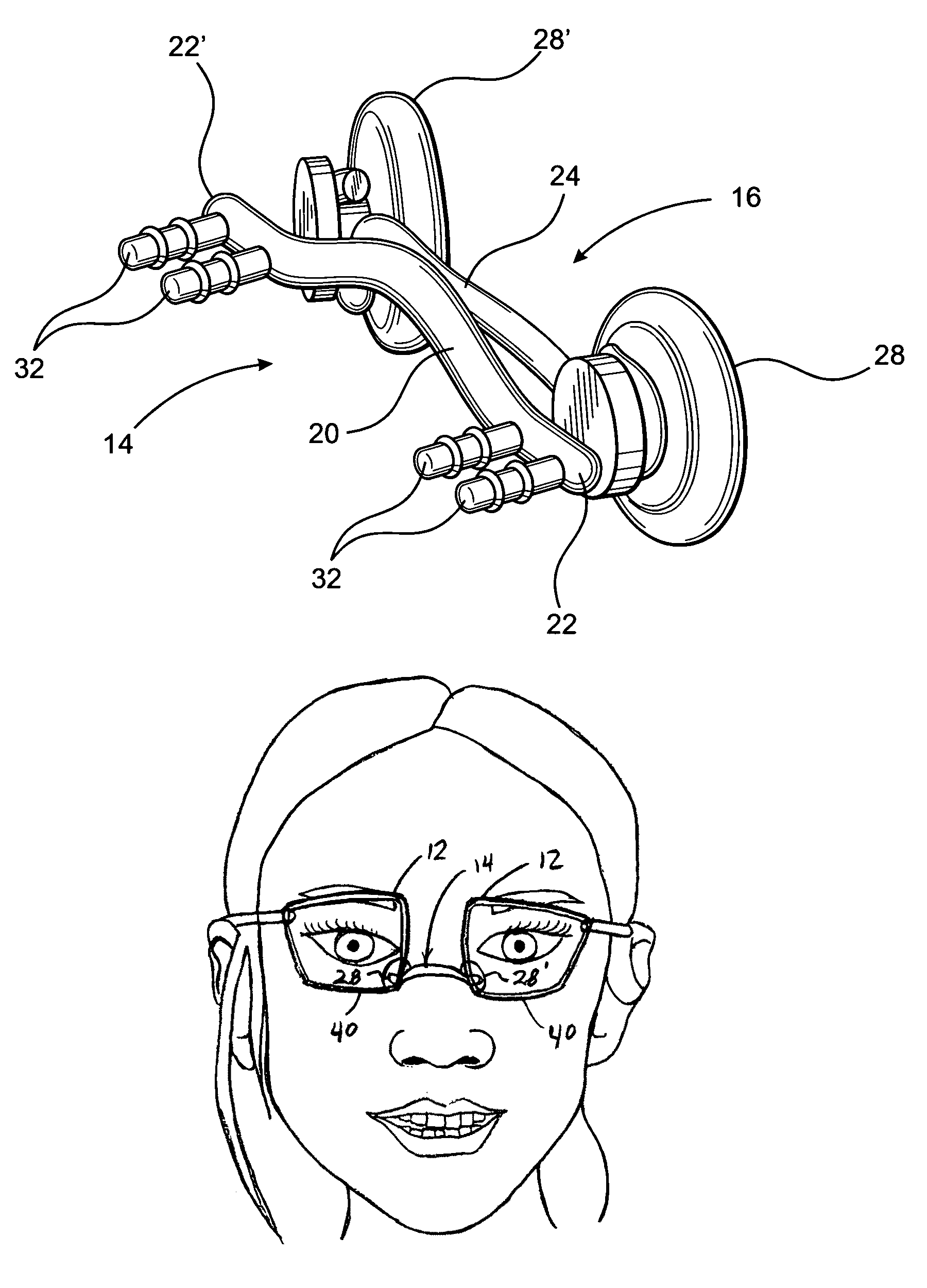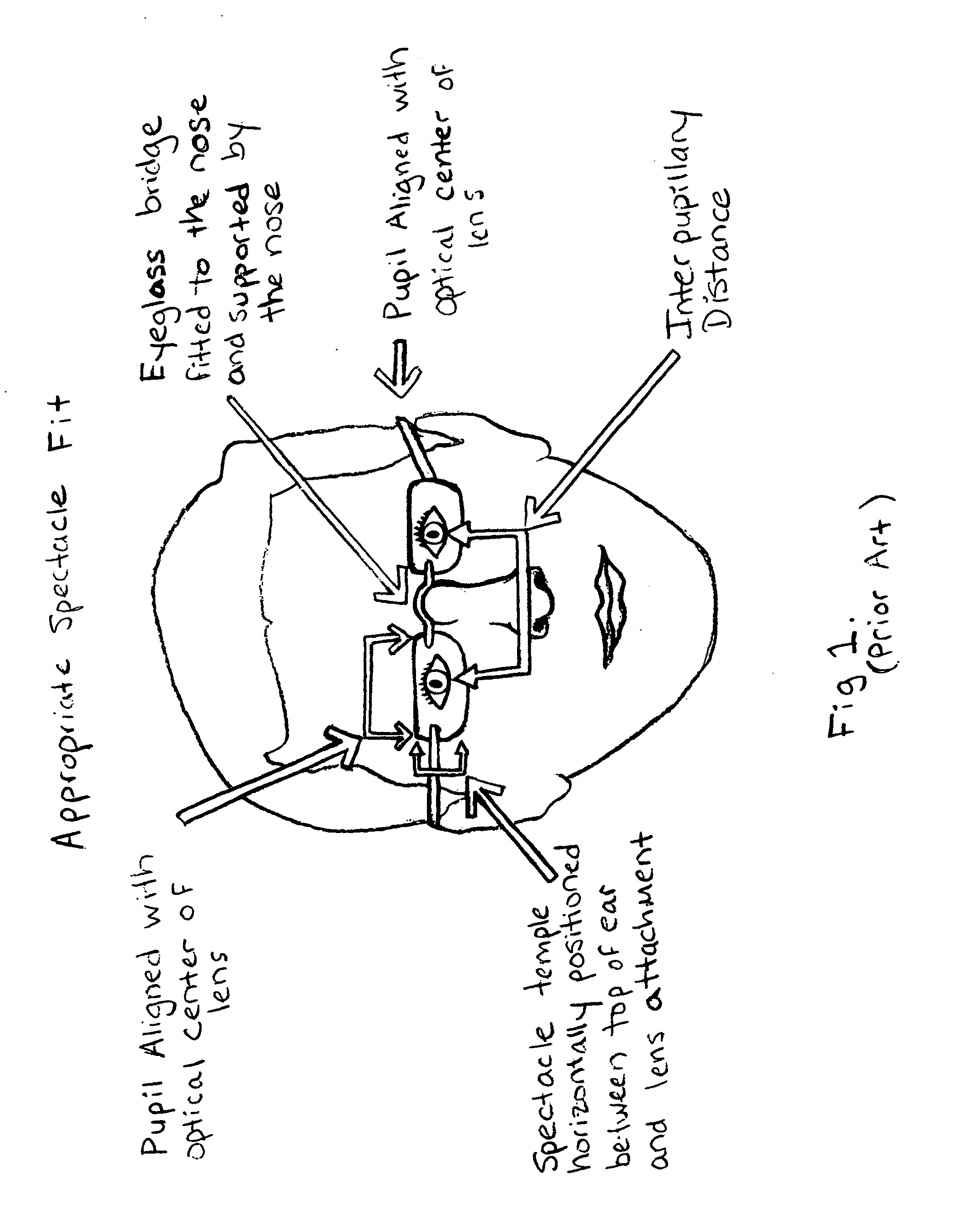Spectacle assembly for faces without a prominent upper nasal support
a technology of upper nasal support and spectacle, which is applied in the field of spectacle assembly, can solve the problems of blurred vision, individuals of eastern asian descent often do not have a sufficiently prominent upper nasal support, and may not have a sufficiently prominent area at the upper end of their nose to effectively support, etc., to achieve accurate positioning and maintaining the lens, facilitate considerable variance in size, configuration and overall design features, and facilitate the effect of stabilization
- Summary
- Abstract
- Description
- Claims
- Application Information
AI Technical Summary
Benefits of technology
Problems solved by technology
Method used
Image
Examples
Embodiment Construction
[0039]The present invention is directed to a spectacle assembly structured for use by individuals of different facial characteristics such as, but not limited to, individual's having an insufficient nasal support for conventional spectacles at or adjacent to a junction of the upper end of the individual's nose and the individual's forehead.
[0040]As represented in the accompanying drawings and with primary reference to FIGS. 4A through 4D, a schematic presentation of at least one embodiment of the spectacle assembly of the present invention is presented along with descriptive text in a superimposed relation to the face and eyes of a wearing individual. Certain dimensions and structural features are represented by the descriptive text that may assist in the assembly of the spectacle of the present invention and the fitting thereof to the face of an individual having an insufficient upper nasal support area to accommodate conventionally structured spectacles, of the type described in t...
PUM
 Login to View More
Login to View More Abstract
Description
Claims
Application Information
 Login to View More
Login to View More - R&D
- Intellectual Property
- Life Sciences
- Materials
- Tech Scout
- Unparalleled Data Quality
- Higher Quality Content
- 60% Fewer Hallucinations
Browse by: Latest US Patents, China's latest patents, Technical Efficacy Thesaurus, Application Domain, Technology Topic, Popular Technical Reports.
© 2025 PatSnap. All rights reserved.Legal|Privacy policy|Modern Slavery Act Transparency Statement|Sitemap|About US| Contact US: help@patsnap.com



